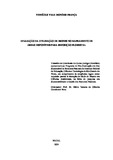Avaliação da utilização de drones no mapeamento de áreas disponíveis para reposição florestal

Visualizar/
Data
2023-10-25Autor
França, Vinnícius
http://lattes.cnpq.br/0773585128573760
Metadado
Mostrar registro completoResumo
The clearing of vegetation in the Caatinga has intensified in recent years due to the increase in the number of wind and solar energy projects. One of the conditions for authorizing the suppression of vegetation is the obligation to replant the forest equivalent to the area that was cleared, with native and similar species. As a way of identifying and mapping areas available for planting, the use of drones has emerged as an alternative to satellite images, due to certain advantages such as price and final quality. The general aim of this work is to analyze the feasibility of using drones as a tool for mapping areas available for forest replacement. The research was exploratory in nature, divided into a documentary survey of legislation on forest replenishment and a bibliographic survey on the use of drones. Secondly, the field stages were carried out using a drone, in which a flight plan was made to obtain an orthomosaic of an area suitable for a forest replacement project, and finally the mapping and calculation of the areas available for planting seedlings. As a result, it was possible to obtain the orthomosaic with drone images, the identification of available areas and the calculation of the number of seedlings. In general, it was possible to verify the technical and operational viability of drones in identifying, calculating and mapping areas available for forest replacement.



